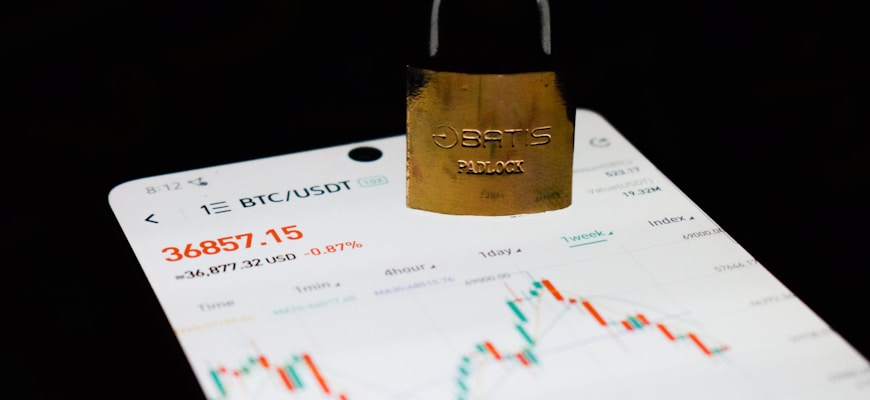The Future of Crypto Risk Management: Trends to Watch

- The Evolution of Risk Management in the Crypto Industry
- Emerging Trends in Crypto Risk Mitigation
- Challenges and Opportunities in Managing Crypto Risks
- The Role of Regulation in Crypto Risk Management
- Innovative Approaches to Crypto Risk Assessment
- Predictions for the Future of Crypto Risk Management
The Evolution of Risk Management in the Crypto Industry
Risk management in the crypto industry has undergone significant evolution in recent years. With the growing popularity and adoption of cryptocurrencies, the need for effective risk management strategies has become more important than ever before.
One trend that has emerged in the crypto industry is the use of advanced technology such as artificial intelligence and machine learning algorithms to analyze and predict market trends. This data-driven approach allows companies to identify potential risks and take proactive measures to mitigate them before they escalate.
Another important development in crypto risk management is the increased emphasis on regulatory compliance. As governments around the world introduce new regulations and guidelines for cryptocurrencies, companies operating in this space must ensure that they are fully compliant to avoid legal issues and penalties.
Additionally, the rise of decentralized finance (DeFi) has introduced new risks to the crypto industry, such as smart contract vulnerabilities and liquidity issues. As a result, risk management strategies have had to adapt to address these unique challenges and protect investors from potential losses.
Overall, the evolution of risk management in the crypto industry is an ongoing process that requires constant monitoring and adaptation to new trends and technologies. By staying informed and implementing robust risk management practices, companies can navigate the complex landscape of the crypto industry and protect their assets effectively.
Emerging Trends in Crypto Risk Mitigation
Crypto risk mitigation is a crucial aspect of managing investments in the volatile world of cryptocurrency. As the market continues to evolve, new trends are emerging in how investors can protect themselves against potential risks.
One of the emerging trends in crypto risk mitigation is the use of decentralized finance (DeFi) platforms. These platforms offer investors the ability to access a wide range of financial services without the need for traditional intermediaries. By utilizing smart contracts and blockchain technology, DeFi platforms can help reduce counterparty risk and increase transparency in transactions.
Another trend in crypto risk mitigation is the use of insurance products specifically designed for cryptocurrency investors. These products provide coverage for risks such as exchange hacks, theft, and fraud, giving investors peace of mind knowing that their assets are protected. Insurance can be a valuable tool in managing risk in the unpredictable world of cryptocurrency.
Furthermore, the development of risk management tools and analytics software tailored to the cryptocurrency market is also on the rise. These tools can help investors assess and mitigate risks more effectively by providing real-time data and analysis of market trends. By staying informed and utilizing these tools, investors can make more informed decisions and better protect their investments.
Challenges and Opportunities in Managing Crypto Risks
In managing crypto risks, there are various challenges and opportunities that need to be addressed. One of the main challenges is the volatile nature of the cryptocurrency market, which can result in significant price fluctuations. This can make it difficult to accurately assess and manage risks associated with cryptocurrencies.
Another challenge is the lack of regulation in the crypto space, which can expose investors to a higher level of risk. Without clear guidelines and oversight, it can be challenging to ensure that proper risk management practices are in place.
On the other hand, there are also opportunities in managing crypto risks. One opportunity is the advancement of technology, such as blockchain, which can provide more secure and transparent transactions. By leveraging these technologies, organizations can enhance their risk management practices and better protect their assets.
Additionally, the growing interest and adoption of cryptocurrencies present opportunities for diversification and hedging strategies. By incorporating cryptocurrencies into their investment portfolios, organizations can potentially reduce overall risk exposure and take advantage of new investment opportunities in the digital asset space.
In conclusion, while managing crypto risks presents challenges, there are also opportunities for organizations to enhance their risk management practices and capitalize on the benefits of the evolving digital asset landscape. By staying informed, leveraging technology, and implementing robust risk management strategies, organizations can navigate the complexities of the crypto market and position themselves for success in the future.
The Role of Regulation in Crypto Risk Management
Cryptocurrency risk management is a crucial aspect of navigating the volatile and unpredictable world of digital assets. One key factor in effectively managing risk in the crypto space is the role of regulation. Regulations play a vital role in providing a framework for the operation of cryptocurrency exchanges and other crypto-related businesses.
Regulatory bodies such as the Securities and Exchange Commission (SEC) and the Financial Conduct Authority (FCA) are tasked with overseeing the activities of crypto companies to ensure compliance with laws and regulations. By establishing guidelines and standards for the industry, regulators help to mitigate risks such as fraud, money laundering, and market manipulation.
Furthermore, regulatory oversight can provide investors and stakeholders with a level of confidence in the legitimacy and security of the crypto market. This can help to reduce uncertainty and enhance trust in the ecosystem, ultimately leading to greater adoption and mainstream acceptance of cryptocurrencies.
However, it is essential to strike a balance between regulation and innovation in the crypto space. Overly restrictive regulations can stifle innovation and hinder the development of new technologies and applications. Therefore, regulators must work collaboratively with industry participants to create a regulatory framework that fosters innovation while also protecting investors and maintaining market integrity.
Innovative Approaches to Crypto Risk Assessment
Cryptocurrency risk assessment is evolving rapidly, with innovative approaches being developed to better understand and manage the risks associated with this new asset class. One such approach is the use of machine learning algorithms to analyze large amounts of data in real-time, allowing for more accurate risk assessments. By leveraging these advanced technologies, organizations can stay ahead of potential threats and vulnerabilities in the crypto space.
Another emerging trend in crypto risk assessment is the use of blockchain analytics tools to track and monitor transactions on the blockchain. These tools can help identify patterns of suspicious activity, such as money laundering or fraud, allowing organizations to take proactive measures to mitigate their risk exposure. By incorporating these tools into their risk management strategies, businesses can enhance their overall security posture in the crypto market.
Additionally, some organizations are exploring the use of decentralized finance (DeFi) platforms to diversify their crypto holdings and reduce concentration risk. By leveraging DeFi protocols, businesses can access a wider range of investment opportunities while minimizing their exposure to any single asset or market. This decentralized approach to risk management can help organizations navigate the complex and volatile nature of the crypto market more effectively.
Overall, the future of crypto risk management lies in embracing innovative approaches that leverage technology and data analytics to stay ahead of evolving threats. By adopting these cutting-edge strategies, organizations can enhance their risk assessment capabilities and better protect their assets in the fast-paced world of cryptocurrency.
Predictions for the Future of Crypto Risk Management
Looking ahead to the future of crypto risk management, several trends are expected to shape the landscape of this rapidly evolving field. As the crypto market continues to grow and attract more investors, the need for robust risk management practices will become increasingly important.
One key prediction for the future of crypto risk management is the rise of artificial intelligence and machine learning technologies. These advanced tools can help analyze vast amounts of data in real-time, allowing for more accurate risk assessments and faster responses to potential threats. By leveraging AI and ML, crypto companies can stay ahead of emerging risks and protect their assets more effectively.
Another trend to watch in the realm of crypto risk management is the increasing focus on regulatory compliance. As governments around the world begin to establish clearer guidelines for cryptocurrency trading and investment, companies will need to ensure that they are following all relevant regulations to avoid legal repercussions. Implementing robust compliance measures will be essential for mitigating regulatory risks in the future.
Additionally, the growing interconnectedness of the global economy means that crypto risks are no longer confined to individual markets. A major cyberattack or regulatory change in one part of the world can have far-reaching implications for the entire crypto ecosystem. As a result, companies will need to take a more holistic approach to risk management, considering not only their own operations but also external factors that could impact their business.
In conclusion, the future of crypto risk management will be shaped by advancements in technology, a focus on regulatory compliance, and a more interconnected global economy. By staying ahead of these trends and implementing robust risk management practices, crypto companies can protect their assets and thrive in an increasingly complex and unpredictable market.



